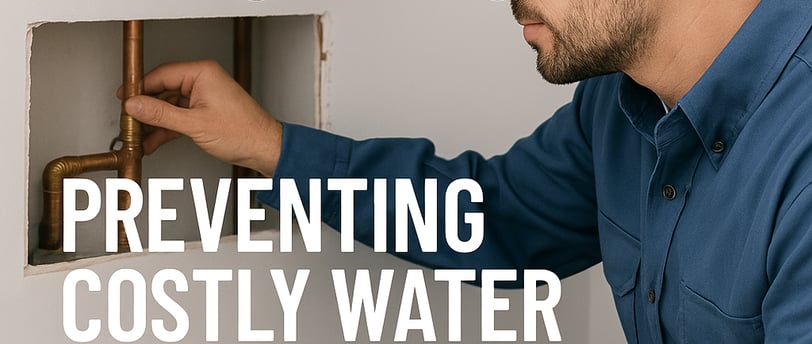Preventing Costly Water Leaks: A Homeowner’s Guide to Detecting and Fixing Hidden Plumbing Leaks
Preventing Costly Water Leaks: A Homeowner’s Guide to Detecting and Fixing Hidden Plumbing Leaks
PLUMBING TIPS
Introduction: Why Hidden Leaks Are a Serious Issue
Water leaks are one of the most damaging yet frequently overlooked plumbing issues. Unlike visible leaks under sinks or around faucets, hidden leaks—within walls, under floors, or in your foundation—can go unnoticed for months. These leaks not only waste water but also cause structural damage and promote mold growth. According to the Environmental Protection Agency (EPA), household leaks can waste nearly 10,000 gallons of water annually.
In this guide, you’ll learn:
The most common signs of hidden water leaks.
Practical ways to check for leaks.
When to attempt a DIY fix and when to call a plumber.
Section 1: Signs of a Hidden Water Leak
While a dripping faucet is easy to spot, hidden leaks are more subtle. Here are some common indicators:
1. Unexpected Increase in Water Bills:
If your water usage hasn’t changed but your bill spikes, it could signal a hidden leak.
2. Mold or Mildew Smell:
Persistent musty odors, especially in areas without plumbing fixtures, may indicate dampness from a leak.
3. Water Stains on Walls or Ceilings:
Yellow or brown discoloration, bubbling paint, or warped drywall often reveals water damage behind the surface.
4. Decreased Water Pressure:
A sudden drop in water pressure throughout your home could mean water is escaping through a hidden crack in the pipes.
5. Unusual Sounds:
If you hear faint dripping or running water when no fixtures are on, it may be a sign of a leak behind the walls.
Section 2: How to Check for Hidden Leaks
Even without plumbing expertise, you can use these simple methods to detect hidden leaks:
1. Monitor Your Water Meter:
Turn off all water-using appliances.
Check the water meter reading.
Wait for one to two hours without using any water.
If the reading changes, you likely have a leak.
2. Dye Test for Toilets:
Toilets are a common source of hidden leaks.
Add a few drops of food coloring into the tank.
Wait 10-15 minutes.
If color appears in the bowl without flushing, the flapper valve may be leaking.
3. Inspect Your Water Heater and Appliances:
Check around your water heater, washing machine, and dishwasher for pooled water or rust stains.
Section 3: DIY Leak Repair Tips
For minor leaks, you may be able to perform temporary fixes while awaiting professional repair:
1. Sealing Leaky Pipe Joints:
Use plumber’s tape or epoxy putty as a temporary seal.
This is effective for small leaks but not a permanent solution.
2. Patching Small Cracks:
For exposed pipes, apply waterproof tape or rubber patches over the crack.
This reduces water loss until the pipe can be properly repaired.
Section 4: When to Call a Professional Plumber
While DIY fixes can help temporarily, professional plumbers should address major or hidden leaks. Call a plumber if:
You suspect a slab or foundation leak.
You find extensive water damage.
You experience multiple simultaneous leaks, which could indicate corroded or aging pipes.
Your water pressure is severely reduced without explanation.
Conclusion: Protect Your Home from Costly Leaks
Hidden water leaks can quickly escalate into expensive repairs and property damage. By recognizing the early signs and acting promptly, you can prevent extensive issues. If you suspect a hidden leak or need professional assistance, don’t hesitate to contact Expert Plumber’s Guide for reliable solutions and expert advice.


